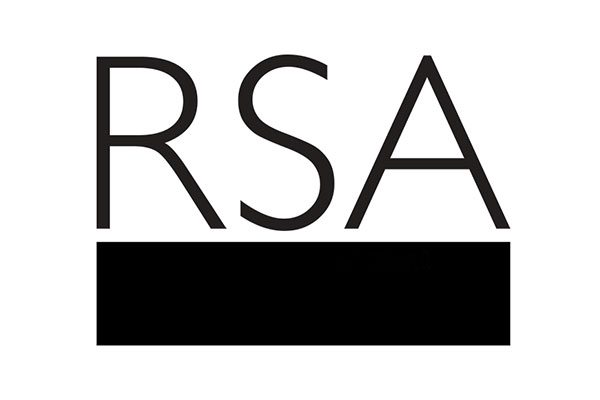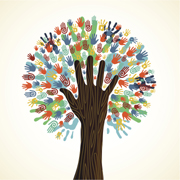How would the Enlightenment coffeehouse model work in the 21st century? Ahead of the opening of the RSA’s new coffeehouse, arts leader and cultural entrepreneur Graham Henderson FRSA looks at the history of the coffeehouse and how we might successfully adapt it to the modern age.
I recently read Brian Cowan’s excellent history The Social Life of Coffee – the Emergence of the British Coffeehouse, and in light of everything I learned, it is very exciting to imagine the possibilities of the new RSA coffeehouse. It is well-known that both the RSA itself and Lloyd’s of London, the insurance market, started off as coffeehouses in the early 18th century. Dr Matthew Green has already given an entertaining and informative lecture to Fellows about the way in which the Enlightenment coffeehouse brought together all sorts of people, and encouraged them to exchange ideas and launch common projects. What interests me the most – and where I guess the greatest challenges are going to lie – is how the 21st-century RSA coffeehouse will replicate this glorious and productive mash-up. This blog makes some modest observations on how the Enlightenment coffeehouse might be reimagined by the RSA.
Coffee started out being an exotic product, primarily enjoyed by a small group of the intelligentsia, or the virtuosi as they were then commonly called. It is fascinating to note how coffee went from being a luxury niche product for those with maverick tastes to being an everyday drink and a focal point for a rapidly developing capitalist economy. Clearly, the quality of the coffee was not the main factor: it was the way in which Enlightenment London brought together an educated and aspiring bourgeois class that was passionate not only about money-making but about curiosity, experimentation and invention. In this regard Benjamin Franklin was perhaps the model of the coffeehouse man, although the original coffeehouses also hosted their share of charlatans, bores, and chancers. The virtuosi origins of the coffeehouse perhaps explain their long term association with novelty, news, and a wide-ranging discourse, and with civility, curiosity, cosmopolitanism and learned discussion.
The coffeehouse was a public space, usually one large room, and was predominantly a male reserve. It was not a particularly good business model for the coffeehouse keepers themselves, who never got more than the penny entry fee, even when deals worth many thousands of pounds were regularly being transacted on their premises. The coffeehouse was not so much a club as a space for social capital to take its own shape. There was a good deal of news-mongering and sociability, often playful and unserious. It was also described as a ‘penny university’. Amidst all the fake news, it was a place to acquire knowledge or even an education.
The most praised attribute of the early modern coffeehouse was its civility. We might therefore conclude that civility and its associated values, the ground rules so to speak, are essential to the success of the 21st-century coffeehouse too. Rudeness and vituperative speech, ignorance or ideological narrowness, prejudice or ill-formed argument should be either the subject of firm informal censure or should even be actively prohibited in order to foster collegiate dialogue. In other words, the 21st-century coffeehouse might benefit from some careful and enlightened curation until the culture is firmly embedded. This may feel old-fashioned or even overly restrictive in the first instance, but it is surely essential to the creation of a successful shared space for constructive discussion?
As a venue suited to so-called ‘gentlemanly pursuits’, the Enlightenment coffeehouse was also frankly and expressly elitist. Arguably its greatest strength is that it allowed great polymaths like Benjamin Franklin to operate in an open space, and to brush shoulders with a wide cross-section of the middling sort. It was open to aspiring individuals while maintaining an elitist ethos. One only has to contrast the Enlightenment coffeehouse with the equally popular but much lower status alehouse with which it competed. There was much anxiety amongst many virtuosi at the dumbing down of the coffeehouse and the access it allowed to less learned individuals, but it is arguably this openness and permeability that transformed the coffeehouse into such an extraordinary engine of innovation and change, including its role as what we might now call a business incubator.
In a modern context too, the values of both knowledge and creativity need to be respected and nurtured. For instance, if there is a nuclear physicist in the coffeehouse, her expertise on her own subject should be respected, even if the conclusions she draws from it are subsequently questioned. It is perhaps in this interaction between people who ‘know stuff’ and a questioning, curious but polite laity where the constructive heart of the coffeehouse milieu lies. Its benefits are more about listening than speaking. Needless to say, civility and courtesy do not exclude passion, polemic or playful ribaldry, or any amount of energetic and lively speech. It probably does exclude shouting, personal attacks, expletives, factionalism, dogma or any descent into a chaos of mere noise. Better, in other words, to have a wise moderator, enforcing civility, than for proceedings to descend into an unedifying slanging match.
Sometimes it appears to be the very self-organising quality of the Enlightenment coffeehouse that made it such a creative space, with a particular establishment becoming quickly recognised as a centre for the arts, commerce, scientific enquiry, political gossip or esoterica. So I would also suggest that the creation of themed areas of interest is crucial to the success of the 21st-century coffeehouse. The RSA’s existing model should be well suited to bringing together like-minded Fellows around particular ideas or projects, because that is the way in which it already operates.
Informal, spontaneous, and not standing on ceremony, it is nevertheless possible that the Enlightenment coffeehouse itself helped to engineer a transformation in manners, and it was this that made it an acceptable platform for the smart and well-connected citizen to exercise influence, and to enjoy status. Clearly, like the social media of its day, it delivered manifest satisfactions: little dopamine hits of recognition presumably measured in face-to-face encounters rather than the number of followers or hits accumulated. It was also a remarkably successful platform for enterprise and for the development of a flourishing environment for the arts, commerce and manufacture. Perhaps the RSA coffeehouse can also set new standards for civility? In any event, I look forward to taking my first cup of steaming java at the RSA coffeehouse when it opens its doors.
The Enlightenment coffeehouses were shaped by those who frequented them, and the RSA coffeehouse will be no different. Almost 4,000 Fellows have engaged with the question of how the new coffeehouse can contribute to the RSA's mission of a 21st-century Enlightenment to strengthen, empower and mobilise new networks of people to tackle today's most pressing social challenges. If you share our vision then please consider supporting the coffeehouse by donating.
Related articles
-
Finding a Focus for Your Social Innovation Community
Tuukka Toivonen
Dr Tuukka Toivonen discusses the importance of discovery and iteration that are essential for social innovation communities.
-
Two Years as an RSA Fellowship Council Member
clem henricson
Clem Henricson, Chair of RSA South East for the last two years, gives an overview of the achievements made by the team and the Fellowship in the area during her time as Chair.



Join the discussion
Comments
Please login to post a comment or reply
Don't have an account? Click here to register.
I am going to offer a very simple addition to the discussion. I wonder if a coffee coaster upon which my cup is placed, could be colour-coded with red on one side and green on the other: while red might suggest that I am preoccupied, green could indicate that I am up for an unlikely conversation.
I'm interested that you make no mention of proximity - of the fact that all those C18th coffeehouses you talk about were in London. 'London is another country' many say - even those of us born and raised therein. If there's one thing the UK needs it's decentralisation. So how will the C21st coffeehouse reach those who live and work outside London? If it doesn't we'll be wasting an awful lot of talent.
Will it include, for example, a new form of social networking system that makes someone contributing on their mobile phone 200 miles away a real part of the conversation going on in John Adam Street? If not, it'll fail.
Interesting thoughts Graham, thanks for sharing. The idea of themed areas is not one I'd heard before. I suppose I'd be keen not to have too much "curation" as it's sometimes linking together seemingly unconnected ideas or indeed taking aspects from one area of work or sector and applying them in new ways that I think can bring the most interest ideas and developments to the fore.
I'd love to see some subtle prompts for conversation - perhaps a board close to a communal seating area with a question for all to contemplate and potentially start a conversation about with those present, showing willingness by their seating position, to have a discussion.
I think the other key role would remain being a place for relatively quiet personal work or small group conversations as ideas started in open discussion need also space to be developed.